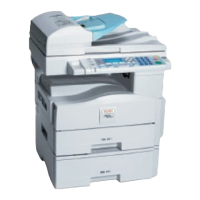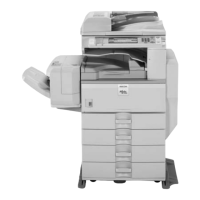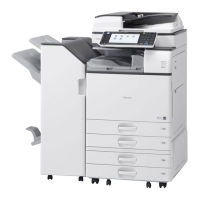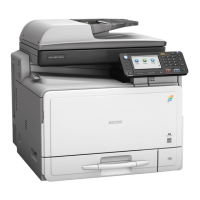4. Using the shared key, encrypt the e-mail message.
5. The shared key is encrypted using the user's public key.
6. The encrypted e-mail is sent.
7. The receiver decrypts the shared key using a secret key that corresponds to the public key.
8. The e-mail is decrypted using the shared key.
• There are three types of user certificates that can be installed on this machine, “DER encoded binary
X.509”, “Base 64 encoded X.509”, and “PKCS #7 certificate”.
Specifying the User Certificate
This can be specified by the user administrator. Each user certificate must be prepared in advance.
1. Open a Web browser.
2. Enter “http://(the machine's IP address or host name)/” in the address bar.
When entering an IPv4 address, do not begin segments with zeros. For example: If the address is
“192.168.001.010”, you must enter it as “192.168.1.10” to connect to the machine.
The top page of Web Image Monitor appears.
3. Click [Login].
The user administrator can log on.
Enter the login user name and login password.
4. Click [Address Book].
The Address Book page appears.
5. Select the user for whom the certificate will be installed, and then click [Change].
The Change User Information screen appears.
6. Enter the user address in the “E-mail Address” field under “E-mail”.
7. Click [Change] in “User Certificate”.
8. Click [Browse], select the user certificate file, and then click [Open].
9. Click [OK].
The user certificate is installed.
10. Click [OK].
11. Click [Logout].
Specifying the Encryption Algorithm
This can be specified by the network administrator.
3. Ensuring Information Security
136

